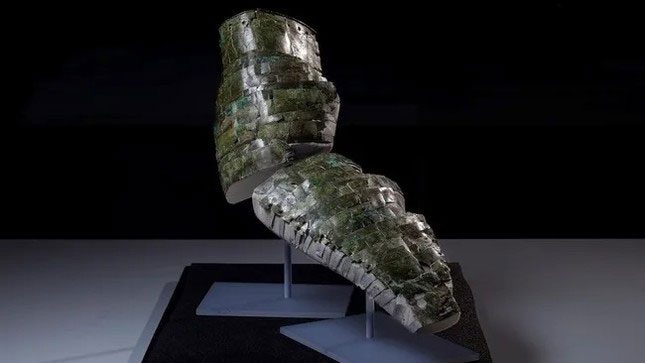Conservators at the National Museum of Scotland have painstakingly reconstructed a 1,800-year-old Roman armor fragment that had broken into over 100 pieces. This completed work is part of an upcoming exhibition.

The reconstructed Roman bronze armguard will be displayed next month as part of an exhibition at the National Museum of Scotland. (Photo: Duncan McGlynn).
For several weeks, museum conservators carefully pieced together what they refer to as “an ancient jigsaw puzzle.” The second-century bronze armor had shattered into dozens of fragments and was discovered in 1906 scattered across Trimontium, an ancient Roman fort site located southeast of Edinburgh.
These fragments have been part of the museum’s collection ever since, with the upper part displayed for the past 25 years (the lower part has been on loan from the Trimontium Museum).
Fraser Hunter, the principal curator of prehistoric and Roman archaeology at the National Museum of Scotland, stated: “This is an extremely rare object.”
Initially, researchers believed that this artifact was a part of a thigh guard used by cavalry. However, they later realized that it was actually an arm guard inspired by similar equipment worn by gladiators in battle.
This artifact will be showcased from February 1 to June 23 as part of the upcoming exhibition at the British Museum titled “Legion: Life in the Roman Army.”


















































